
The McCurdy & Rhodes 38' Selkie gives some local RI high school sailors their first exposure to sailing on a Big Boat.
For the casual observer watching a yacht race is not a particularly exciting pastime. Typically there are several boats with pretty colored sails moving slowly across, hopefully, sparkling blue seas water with a scenic backdrop in the background, at least around Narragansett Bay.
Zoom in to the activities on the boat though and one will discover a steady buzz of activity both intellectual and physical that rivals the teamwork, planning, skills co-ordination and knowledge base of any team sport or activity. Sailing generally, and successful sail boat racing in a yacht, as distinct from a dinghy requires particularly a pretty good working knowledge of about a dozen disciplines. The best teams and individuals on a successful program have skills in several sciences including weather, oceanography, mathematics, aero-dynamics, and hydrodynamics, mechanical engineering-Further there are skills in project management, leadership, instruction, human relations and safety procedures as well as knowing “how to sail”. What has typically been missing from most “big boat” racing programs for the past 30 years or so are junior sailors, I.E. young sailors of high school age.
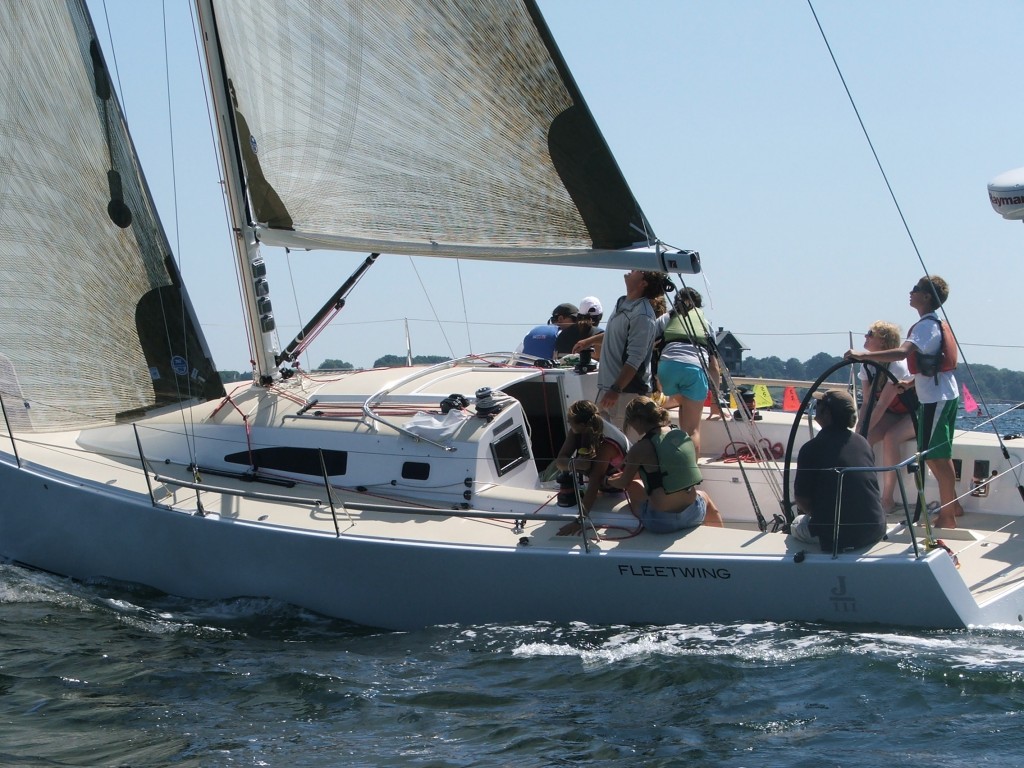
A crew of Junior sailors sailing the J 111 Fleetwing
Next time you watch a sail boat race or are out sailing in your weekend yacht club race or Wednesday night beer can race, try this exercise. Do a head count of how many young sailors (read High school) you see, on your boat and on the competition. Chances are it might look like this: a couple of youngsters sitting in the back more or less watching with perhaps the owner’s son on the bow….Who is doing the mast, sewer, trimming, mainsheet, navigating? Steering even…..Probably not a 15 year old. For those of us who pay attention to these things there is a dearth of young sailors present on yachts. Nick Hayes’ book and the stories he tells in it not withstanding this situation is common across the country. It is undergoing a widespread and increasingly rapid change though.
From my perch in Newport R, I have been involved with no less than 5 activities of greater or lesser formality that focus on introducing high school sailors to the art, science, adventure, seamanship and related skills necessary to be competent around a big boat.
The baseline assumption is that the guys of my age, late 50’s that grew up hanging around big boats and sailing on same with their dads and so absorbed “Seamanship” at an early age, are a declining cohort of sailors. This condition: A family activity with learning by osmosis– exists for far fewer kids these days. In my own case I had several mentors in my youth and by age 18 I appeared sufficiently competent to the skipper of a Half Tonner ( a now obsolete rating rule class, about 30 feet LOA) to be invited to sail with him in the infamous Sydney to Hobart race. An adventure I can still recall with great memories including being scared to death for about 20 minutes the first time I saw 60 knots of wind and 25 foot cresting seas in Bass Straight.
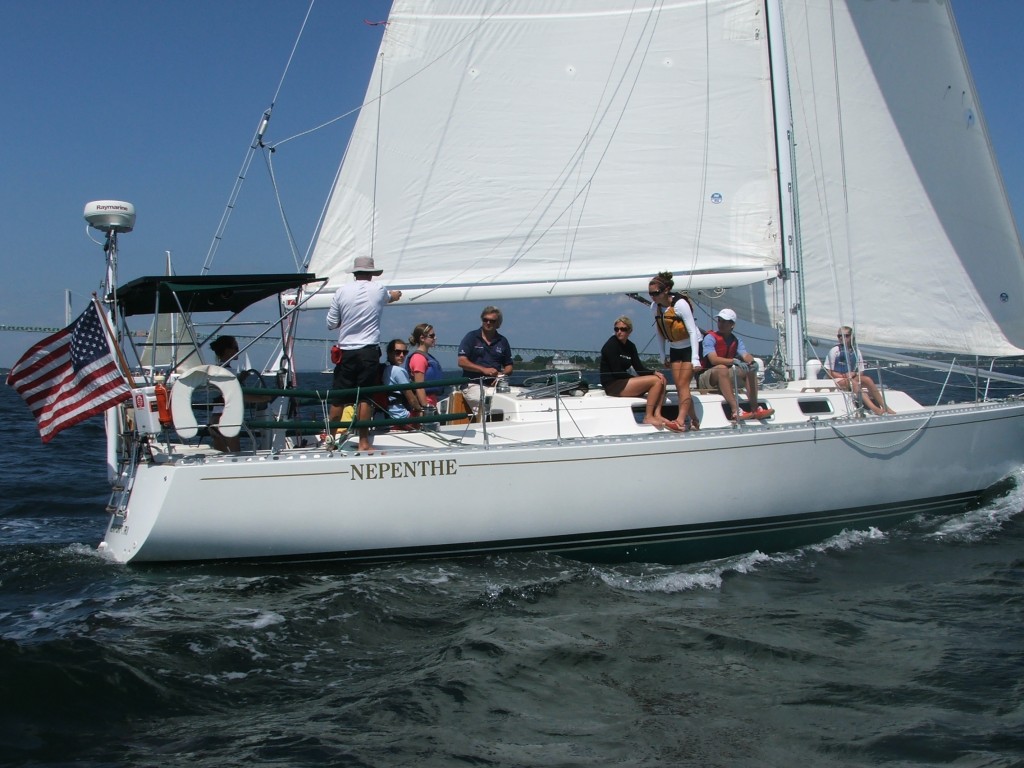
Jr SAS participants receiving instruction aboard the J-40 Nepenthe
I took on the role of High School Sailing Coach when our son entered High School in 2010. One thing that puzzled me is that, in the North East at any rate, High School sailing lasts about 10 weeks from Mid march to Memorial Day, and then stops. This struck me as a supreme misuse of resources and energy. In the summer following my first year I made it a point to keep in touch with my team members and their parents, sending emails to them regarding appropriate sailing schools and programs to buff up their skills, interesting regattas and other events to keep sailing in the forefront for longer than 10 weeks. In the summer of 2010 I was also involved in either the creation, organizing and promotion (sometimes all three) of the following three events.
Storm Trysail Club & Foundation Junior Safety at sea Seminars:
15 years ago Rich DuMoulin, a prominent & successful Long Is Sound sailor developed the idea of a one day seminar to train juniors in the basic skills necessary for safe handling and crewing on a “Big Boat”. Since then this seminar has become the default program for such training and is required for any youth sailors competing on any of the Big Boat events dedicated to teen sailors on Long Island Sound. Junior Safety at Sea Seminars are now held in Annapolis, Raritan, NJ, and Newport, RI. For 2012 there are two more: Shelter Island Yacht Club and a combined effort between Fishers Is. Yacht Club & New England Sailing and Science–N.E.S.S.– foundation in Stonington, CT.
The meat and potatoes of the day begins with a morning of instruction on just what to look for and, more importantly how to think about being on a bigger boat. Take for instance a simple mechanical task like how to operate a winch. This instruction is basic and is a seemingly simple task for the experienced sailor but if you have not done it before….? (and reflect for a moment if you will, just how did you learn to handle a line on a winch?) The correct, and safe, method of putting a the line around the winch and then how to remove it; a discussion of the load’s generated on the lines that the winch controls, how to deal with the removable handle and so on. Skill and dexterity in this task is akin to mastering the serve in tennis-The most basic of basic skills, with out which one will never be able to play ball, but a lot more hazardous to one’s fingers if in adequately performed. The whole day is similarly dedicated to a personal and up close inspection of the mechanics of several different types and sizes of boats, including the location of safety gear, firefighting equipment and procedures, thru hull valves, pertinent navigation equipment, the equipment layout on deck, MOB protocols and drills,

MOB drill on Nepenthe
E.P.I.R.B’s the correct way to operate a VHF radio, reefing, heaving too, life jacket and safety line use and techniques and related seamanship skills. The greater portion of the day is execution of the morning’s instruction aboard the boats that are supplied by willing owners in the region and are under the command of volunteer instructors all of whom are highly skilled in the arts and sciences of operating a big boat.

CCA commodore Sheila McCurdy presents a module to STC Jr. SAS seminar, Newport 2011
During the course of the day there typically is a demonstration of the inflation of a life raft, techniques for entering and righting it in the event it is upside down and proper procedures for living on one, should the need arise. Another session covers the different types, and uses of, various smoke flares. During the 2011 seminar the local Newport, RI, USCG station, Castle Hill, made a 45 footer available and discussed the Coast Guard role in S.A.R. and related activities with the participants.
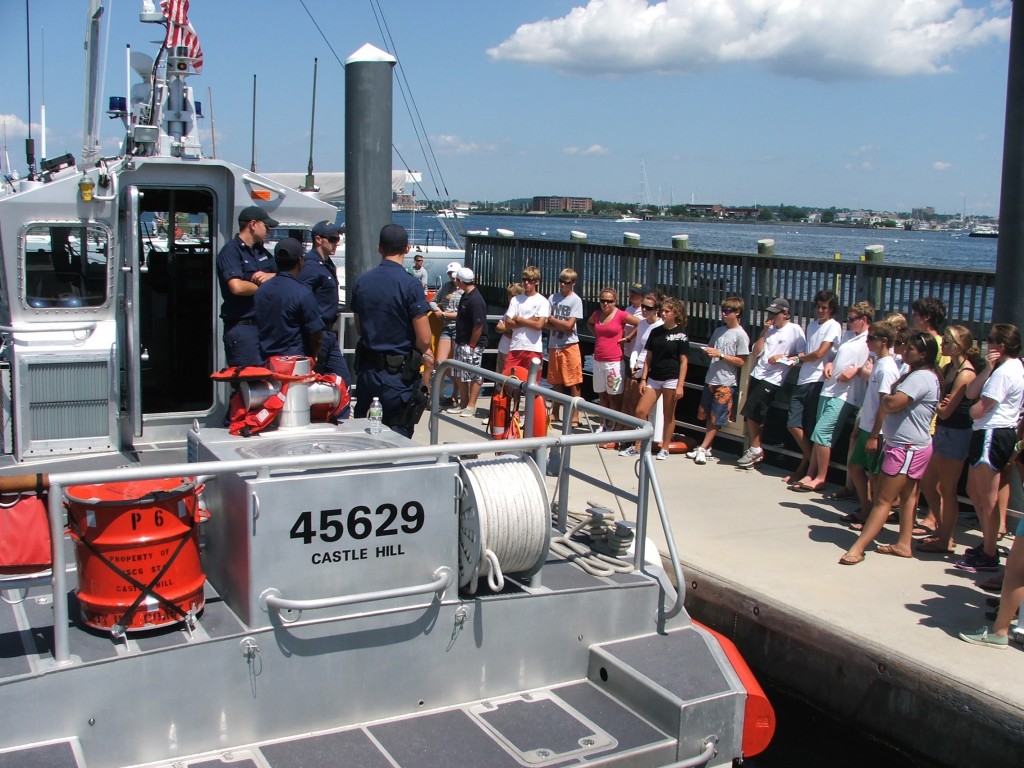
USCG station Castle Hill crew at the 2011 STF Junior Safety at sea seminar in Newport
The final event of the day is a speaker, typically someone with pretty salty boots, discussing their experiences in the field. For the 2011 seminar we were fortunate to have Jamestown resident and experienced multi-hull sailor Philip Steggall.
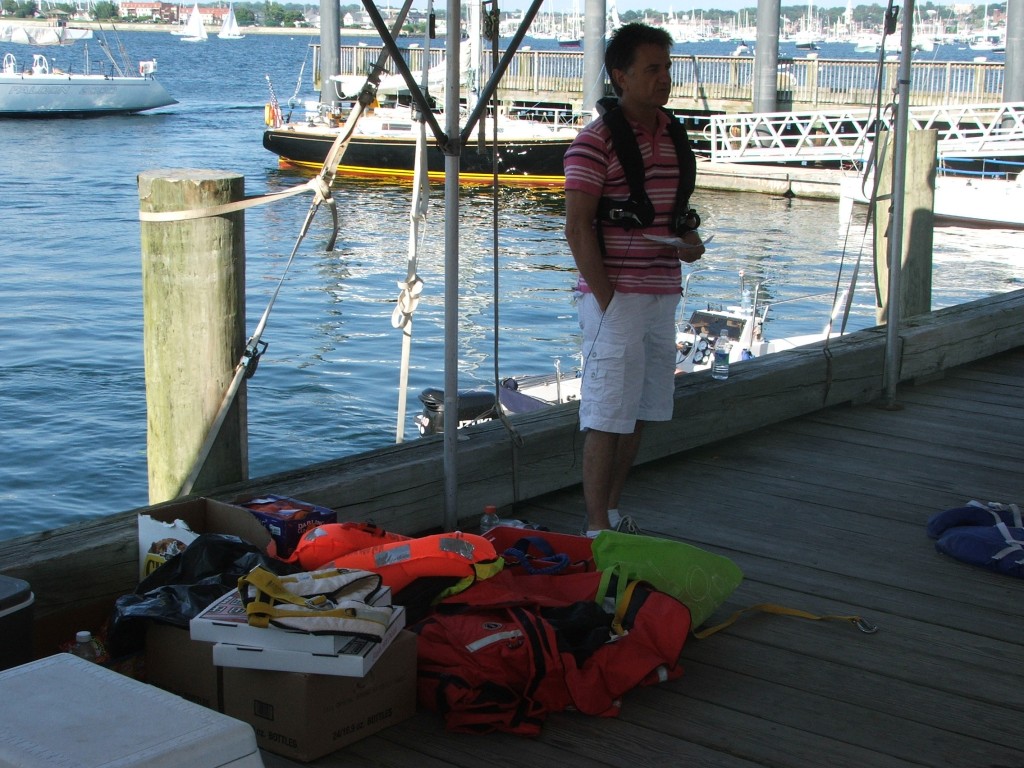
Jr. SAS participants hear from noted offshore sailor Phil Steggall
Steggall brought with him a cross section of the personal safety equipment he has accumulated in a 40 year offshore sailing career and discussed the mindset that the best offshore yacht sailor’s use-In short, sailing a big boat is a bit like a chess game in that the crew must always be thinking several moves ahead.

SAS participants get up close and personal with a life raft.
Ida Lewis Distance Race:
In 2010 the Ida Lewis Yacht Club introduced in the Youth Club Challenge Class into their annual Distance Race. The idea was to offer a class that encouraged the mustering of a high school crew so as to generate a body of young sailors with overnight yacht sailing/racing/seamanship experience. The basic parameters for entry were: PHRF ratings & more than 50% of the crew to be between 14-19 years of age. The balance of the crew to be made up of adults with the basic theme (although not incorporated in any formal race documentation) that the kids do the work and the adults mentor. The boa’s sailed the 150 mile course zigging and zagging around Block Island Sound with the longest leg being perhaps 30 miles, so basically an overnight passage, with lots of navigation and sail handling.
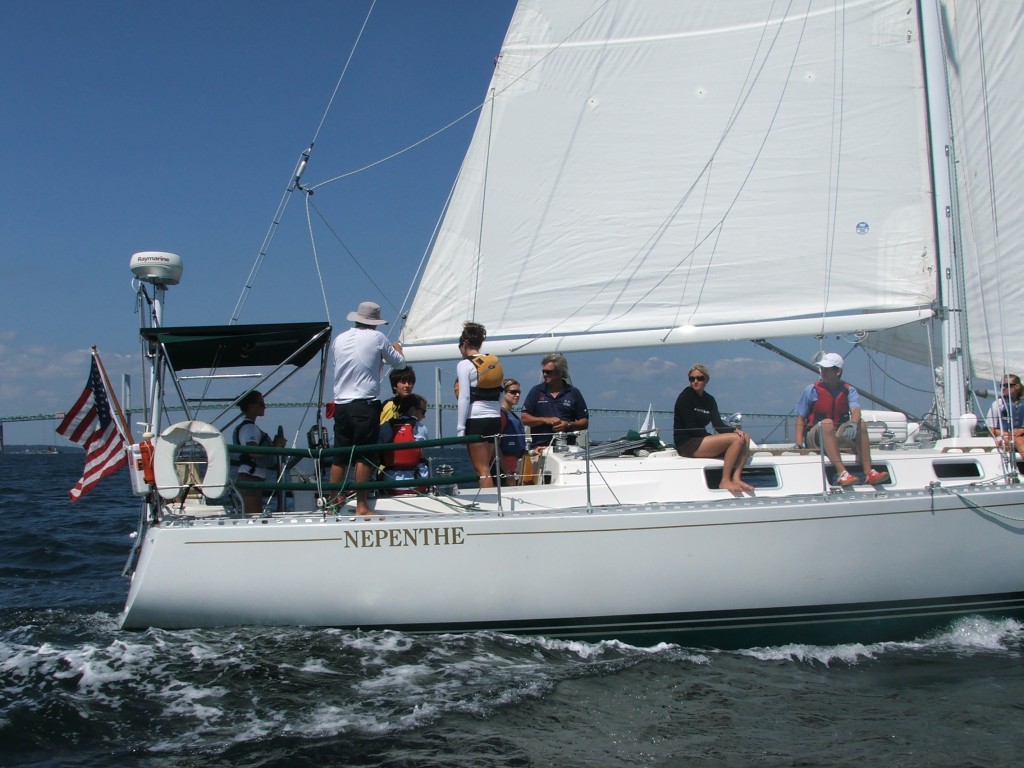
Junior Safety at sea participants receive instruction aboard the J 40 Nepenthe
In the 2011 edition of the event, one 70 footer, “Gracie”, took 12 juniors for the race and they basically ran the boat with the adults supervising. The boat’s Professional Captain Skip Wood was very impressed with the speed with which the juniors absorbed the multitude of information and skills needed to operate a yacht of this size. In an email following the race Capt. Wood remarked: “The kids deserve plenty of credit and did as well as any adult crew given the fact they were new to the boat and had an average weight of 140 pounds!”
One young lady who left her call to Gracie too late ended up as the lone junior on a 4 man crew aboard the Class 40 Toothface and was still glowing 3 days later when I interviewed her.
Sail for Hope:
The third regatta was the Sail for Pride regatta, a regular fixture on the NBYA calendar since the first event was held in the wake of the 9/11 attacks. For this 20 mile race around Jamestown Island I gathered, in 2010, 12 of my high school sailing team members and loaded them aboard the 80 footer “Falcon 2000”. With a dozen high school sailors and half a dozen adults in the leadership roles in each part of the boat, again the kids were instructed in the tasks for each position and the adults supervised.
By the end of this race most of the kids had performed in at least a couple of positions and anyone who wanted to, had the opportunity to steer.
This series of 3 Big Boat training opportunities was repeated in Newport in 2011 with the addition of an extra opportunity. Several of the Falcon Crew from 2011 expressed interest in doing more big boat sailing so I emailed a collection of the sailors I knew locally and offered to provide a youth sailor for the crew if they would accept the responsibility of mentoring them. Several on the locals stepped up to the plate and I was able to place 3-4 of the high school kids on local boats.
Separately American Yacht Club allows the addition of one crew up to 14 years old in a boat’s roster in their fall regatta with NO (handicap) penalty for head count or weight. I know of one J-105 already taking a junior in this very competitive class.
Into the future
Behind the scenes the management at the Storm Trysail Club, and its Foundation, have been developing a program to make it easy for other yacht clubs to host Junior Safety at Sea seminars in their local regions. This was promulgated in Chicago during the USSA Yacht Club Symposium May 2011. The upshot of this exposure is that the STC Jr SAS is now supported by United States Sailing Association, the governing body of sail boat racing and related activities in the US. Further, planning is underway to develop a 4 year curriculum for Jr. SAS participants so they can start as freshman with the safety at sea seminar and progress thru a 200, 300 and 400 level course. The goal is to have a Hig School senior sufficiently skilled so that he or she could be competent to be the skipper (Person in Charge) of a 35 footer for an overnight race.
Mentoring of junior sailors need not only happen in a racing environment. In fact it is possible that a superior experience may come from more low key activities. Deliveries are a great way for the novice to get to do a bit of everything, there are less crew and there is often more time for instruction and mentoring than in the heat of a race which of course we all want to win so instruction is secondary.
One of the repeat issues sailors discuss amongst themselves around the bar after a race is the difficulty of finding reliable competent crew with which to man ones club racer. If such sailors were to cast their eyes about and offer to take some of the juniors out, the son of a crew member, kids from the local High School sailing team, local community sailing program, then they would have a hand in solving the problem they are discussing. They are likely to give the kids a huge experience that, in my case had a life changing impact on them. The kids might even have the skills to get on a boat for the Bermuda Race and be scared to death for 20 minutes as the boat enters the Gulfstream in 60 knots of wind.
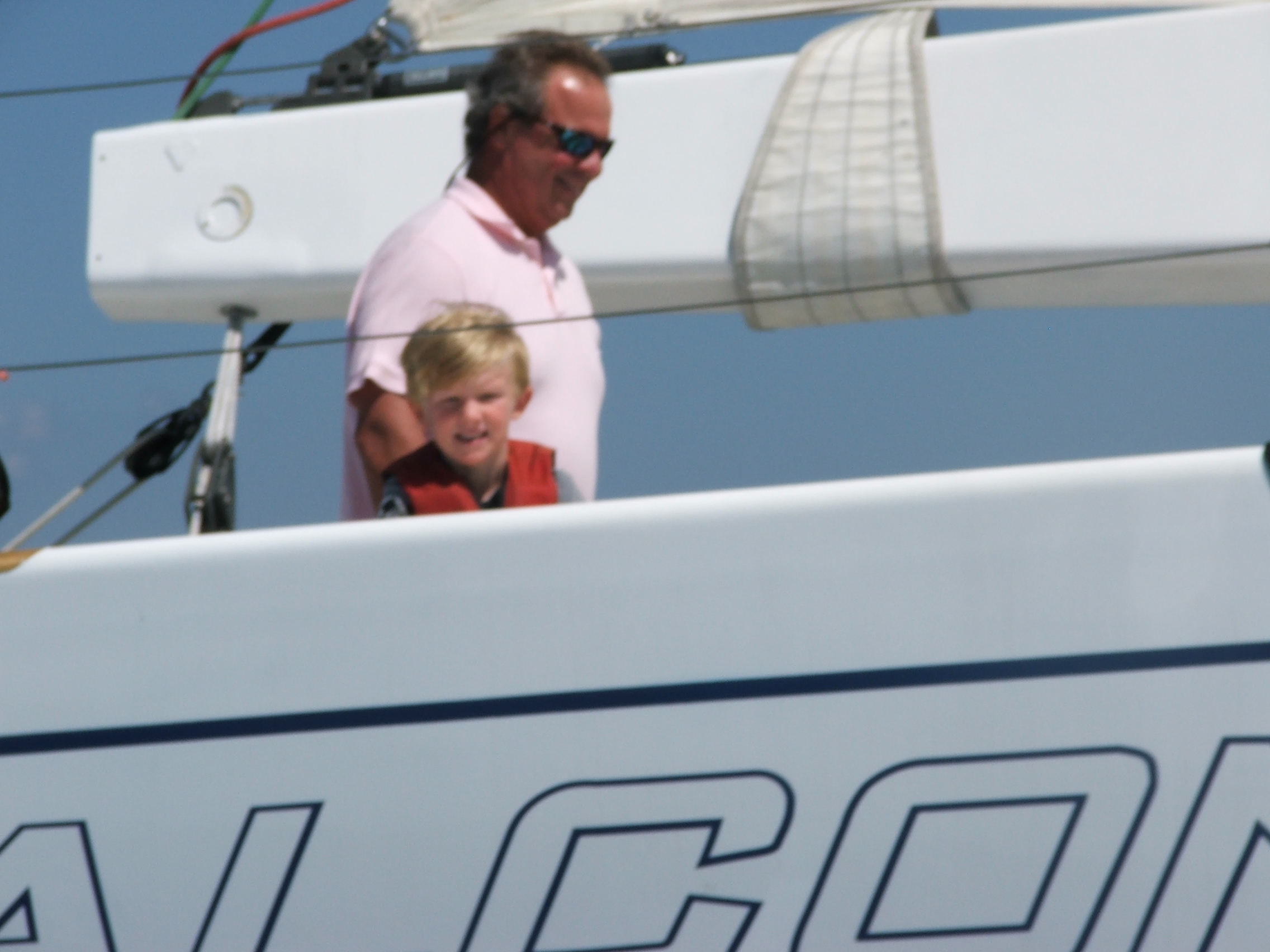
It's never too soon










